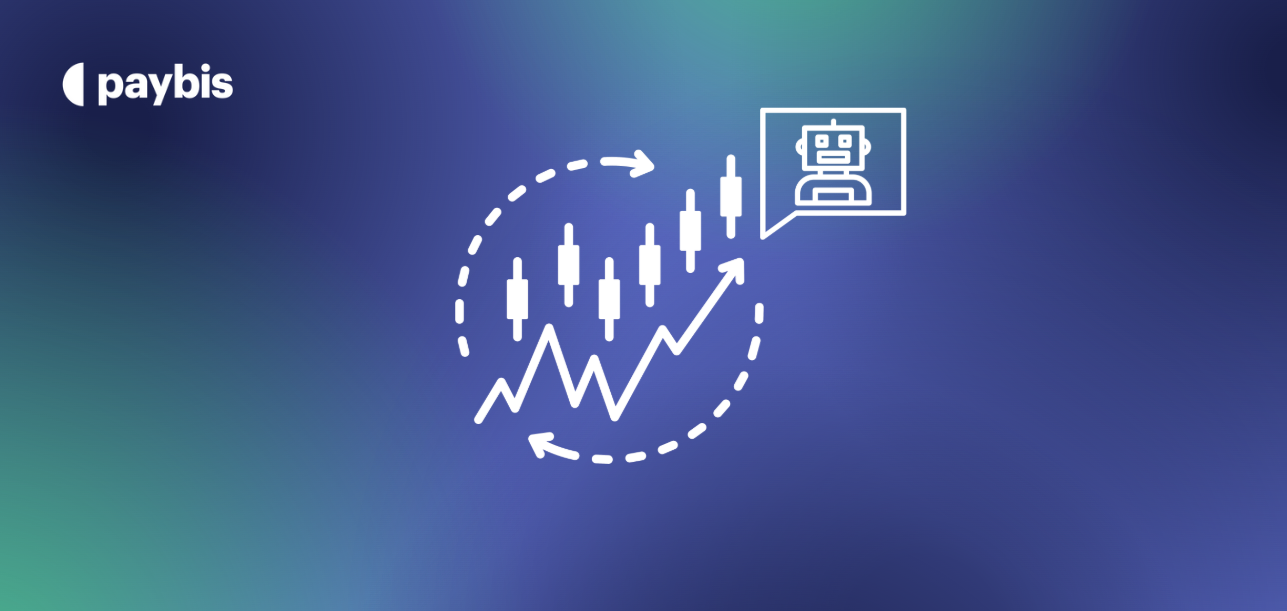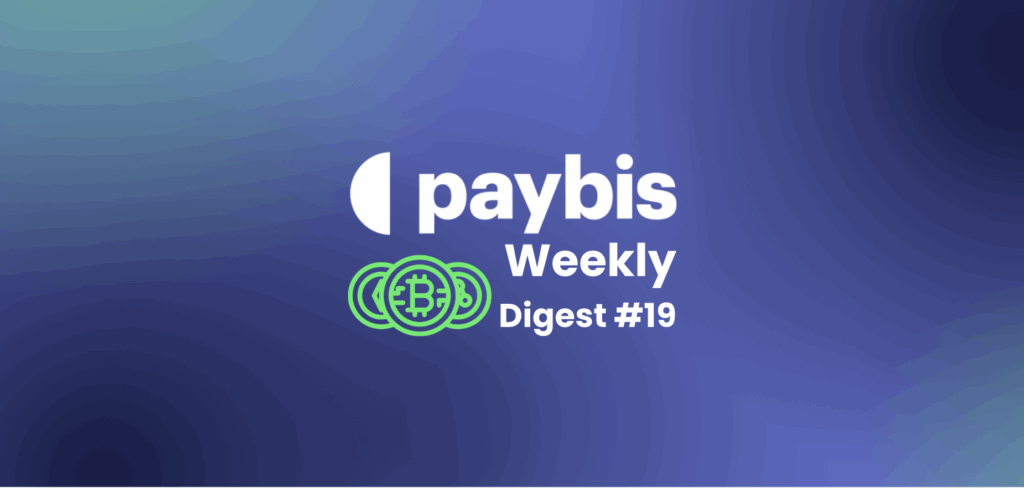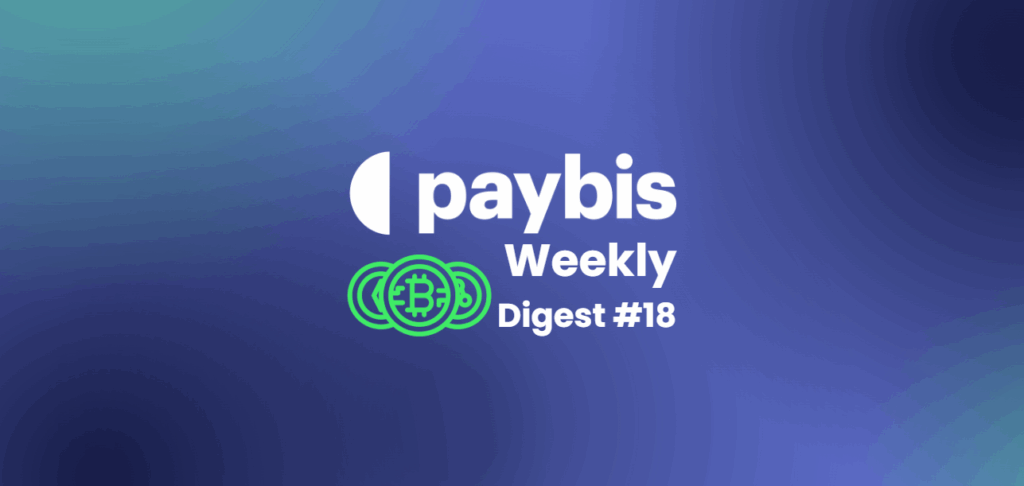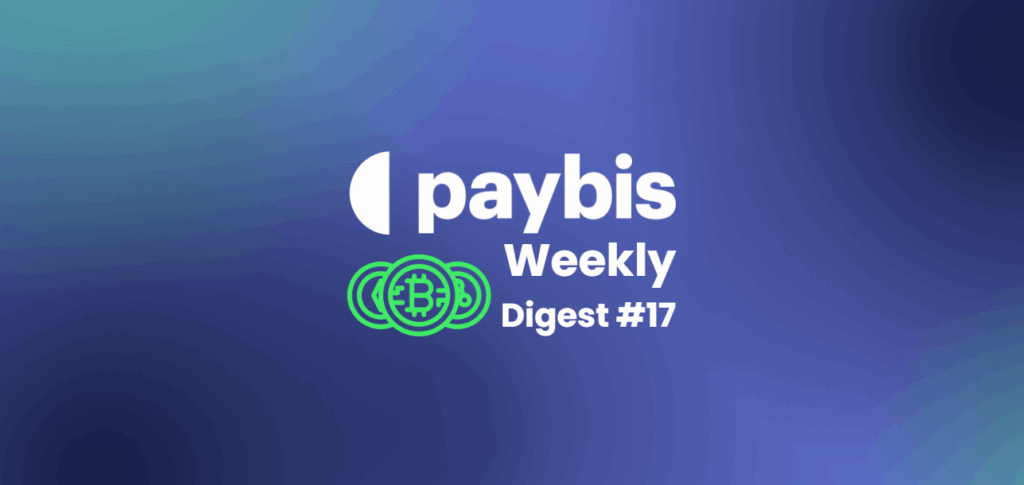How to Choose the Right AI Trading Bot? The Ultimate Guide
AI is shaking up the world of trading in a big way. Now, with the comfortable and extremely powerful help of artificial intelligence, traders are able to make smarter, faster, and more efficient decisions. And amid the onslaught of AI-driven tools are AI trading bots, automated systems that use machine learning to scan markets, identify opportunities, and execute trades around the clock.
No wonder they’re receiving such market hype, but we’re here to cut a bit deeper and explore what these trading platforms are all about, what the best practices of choosing a trading bot are, and how to avoid scams that are seemingly growing with the same speed as AI tools. Let’s dive in.
The purpose of this article is to provide a robust educational background on AI trading bots, not to promote any investment advice.
Table of contents
What Is an AI Trading Software and How Does It Work?
If you want to understand AI’s involvement, you should first have an understanding of what a trading bot is to begin with. An AI trading software is a program that uses artificial intelligence and machine learning to automatically analyze large amounts of market data to trade for you.
Instead of you spending hours to sift through the hoards of information on the internet, scanning through trading platforms, checking the latest market changes, an AI trading bot does it all for you – if programmed to do it right.
Now, to understand a little bit more about how these bots work, these automated systems are able to analyze real-time and historical market data. However, the magic happens when machine learning kicks in.
While we covered this in length in a previous article on the impact of AI and machine learning on crypto trading bots, essentially, machine learning algorithms are trained to process certain types of data to identify trends and generate appropriate actions.
What are the Main Benefits of Using AI Trading Bots?
AI trading bots have already demonstrated incredible success in different markets, though it’s important to understand that the outcomes vary on strategy, data quality, and market conditions. However, a case study written by Nettyfy Technologies found that an AI trading bot achieved a 92% success rate in trade predictions, leading to a 48% average monthly return and a 35% reduction in losses during volatile periods.
At the same time, it’s important to stress that the success, performance, and efficiency heavily depend on the programming, individual machine learning algorithms, how well they were trained, and the data that’s fed into these algorithmic trading systems.
Key Advantages of AI Trading Bots
- Speed & efficiency: AI trading bots can process vast amounts of data and execute trades in milliseconds, allowing traders to capitalize on fickle market opportunities.
- Emotionless & objective decision-making: Unlike human traders, AI bots operate based on data and predefined algorithms, eliminating emotional biases and FOMO.
- 24/7 Market Operation: AI bots can monitor and trade in markets around the clock.
Key Limitations of AI Trading Bots
- Overfitting: AI models trained on historical data may perform exceptionally well in backtesting but fail in live markets due to overfitting.
- Market anomalies: AI bots can struggle to adapt to sudden market events like geopolitical crises or economic shifts.
- Black-box nature: Many AI models, especially those using deep learning, operate as black boxes (complicated architectures and opaque decision-making mechanisms), making it challenging to interpret their decision-making processes.
Types of AI Trading Bots
Bot type | Description | Popular platforms | Key features |
Stock trading bots | Tailored for traditional markets | Trade Ideas, MetaTrader (with AI plug-ins) | Uses fundamental analysis, AI models, and macroeconomic data |
Crypto trading bots | Operate 24/7 in digital asset markets | 3Commas, Cryptohopper, Bitsgap | Supports strategies like scalping and grid trading |
Arbitrage bots | Exploit price differences across exchanges | Pionex, Coinrule (with arbitrage setup), HaasOnline | AI quickly detects fleeting price discrepancies across platforms |
Trend-following bots | Identify and follow market trends | Shrimpy, Trality, TrendSpider | Effective in trending markets |
How to Choose the Right AI Trading Platform & Bot
Now, when it comes to choosing the right AI trading platform bot for you, there are several important factors to consider. While it may not be the easiest question, in a step-by-step walkthrough below, we’ve summarized the steps you should take to help get a clearer picture of what to focus on.
Step 1: Choose the Asset Class: Stocks vs. Crypto
First and foremost, you should be specific about the kind of asset class you’ll be focusing on. AI trading bots might sound all-encompassing, but not all bots are built the same. Some bots are designed specifically for traditional markets like stocks or forex. If you trade stocks or ETFs, look for bots compatible with platforms like Interactive Brokers or TD Ameritrade.
Other bots, ones that are becoming especially popular these days, are optimized for cryptocurrency markets and trends. If this is the case for you, it’s best to choose bots that support major exchanges like Binance, Kraken, or Coinbase and can operate 24/7.
Step 2: Look for Strategy Customization Options
Backtesting is the amazing process of testing a trading strategy before you actually run it. Backtesting is often developed or optimized using machine learning by using historical market data to evaluate its potential performance before deploying it in live markets.
It’s an incredibly useful feature, which usually only the most reputable and popular AI bots have. This feature essentially allows you to customize and build your own trading strategy without the fear of loss, but actually to gain valuable insights and a better understanding of the market situation.
Step 3: Check Risk Management Features
This may sound redundant, but using a trading bot that has strong risk management protocols set up is essential for your long-term, problem-free trading. To determine whether or not a trading bot has the built-in tools to manage risk, look for features like stop-loss, take-profit, trailing stops, position sizing, and max drawdown limits.
Step 4: Evaluate the User Interface & Support
Whether you’re a seasoned trading professional or a beginner, a crypto bot with a user-friendly system and dashboard is the one we all gravitate to. The reason is simple – an optimized user interface can save time and reduce errors, especially for beginners.
Quality customer support is also crucial when technical issues arise. Check if the platform you’re interested in offers tutorials, community forums, or live chat assistance.
Step 5: Confirm Regulatory Compliance
Last but not least, confirming regulatory compliance is absolutely a non-negotiable before choosing any sort of AI trading bot. This should not only be done to protect your personal funds but also to ensure a safe and smooth trading experience without any regulatory hiccups, especially if the bot connects to your brokerage or uses third-party APIs. Make sure to look into secure API key management, KYC/AML policies, and also if a trading bot operates in regulated jurisdictions.

Best AI Trading Bots in 2025 for Cryptocurrencies
The world of AI trading bots is huge, and it will only grow from there. AI is here and it’s here to stay, so the best we can do is familiarize ourselves with AI tools to both adapt to the changing times and learn how to capitalize on the benefits of automation.
As we’ve already covered before, there are different types of AI trading bots, but for the purposes of this article, we’ll be covering specifically crypto AI trading bots.
1. 3Commas
3Commas is a popular crypto trading bot that helps traders automate their trades across major exchanges like Binance, Coinbase, and Kraken. This bot offers smart trading terminals, copy trading, and customizable strategies that both beginners and advanced traders can use to enhance their trading experiences.
One of its standout tools is the Dollar Cost Averaging (DCA) bot. It helps manage volatility by spreading purchases over time. Moreover, 3Commas is also popular for its user-friendly interface and risk management tools.
- Popularity: Over 1.8 million users globally, with integrations across 14 major exchanges, including Binance, Coinbase Pro, and KuCoin.
- Pricing: 3Commas offers a free tier, with paid monthly plans starting at $49/month.
- Strengths: Advanced features and a strong community.
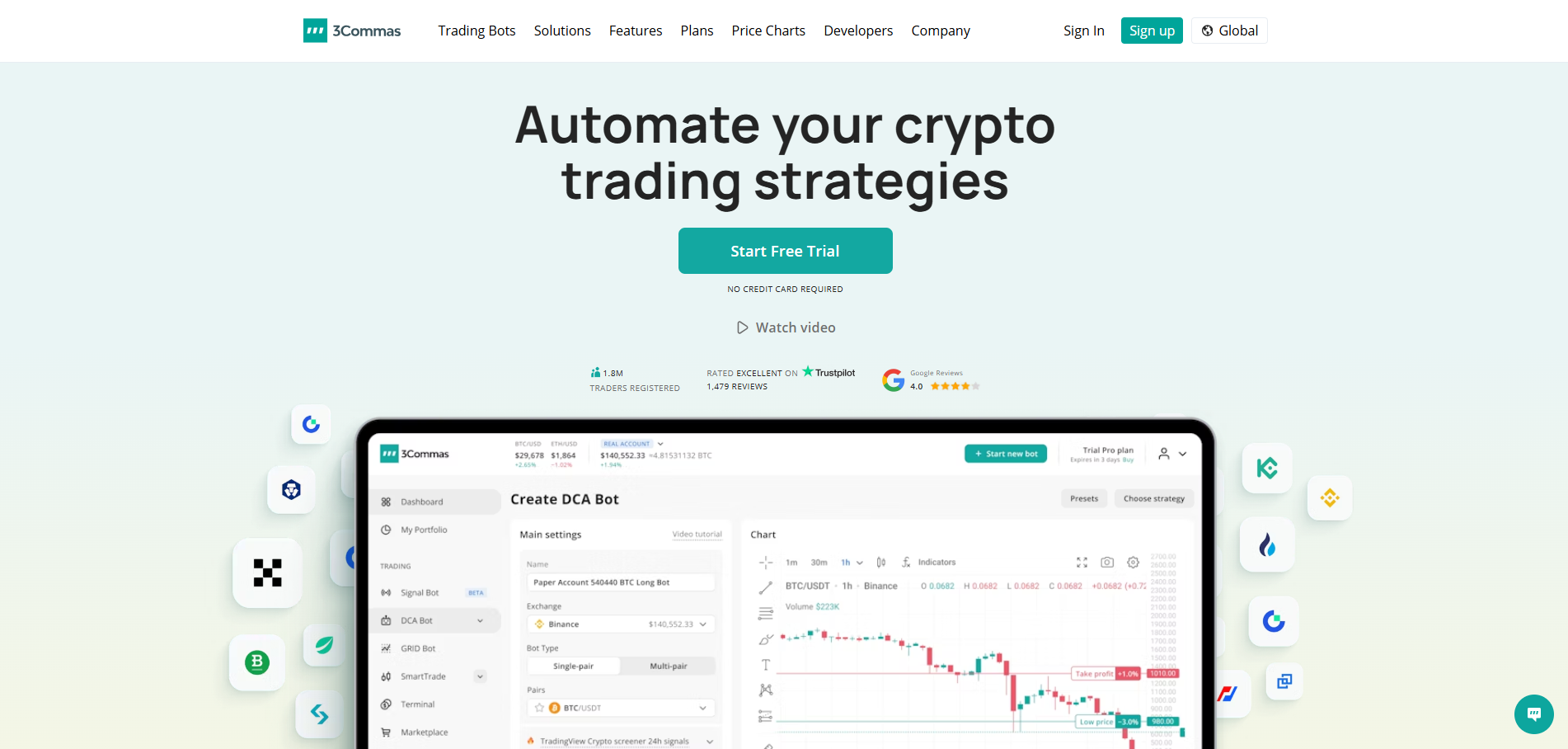
2. Cryptohopper
Cryptohopper is an all-in-one crypto trading bot designed to simplify automated trading for users of all skill levels. It supports strategy backtesting, external signal integration, and even lets you rent proven strategies from the marketplace.
Major features include trailing stop-losses and AI-powered strategy design, which helps traders respond more dynamically to market changes. Cryptohopper also offers paper trading, so users can test strategies risk-free before going live.
- Popularity: Supports over 15 major exchanges, including Binance, Kraken, and Coinbase Pro.
- Pricing: Free plan, paid monthly plans start from $29/month.
- Strengths: A versatile bot with both beginner-friendly and advanced features.
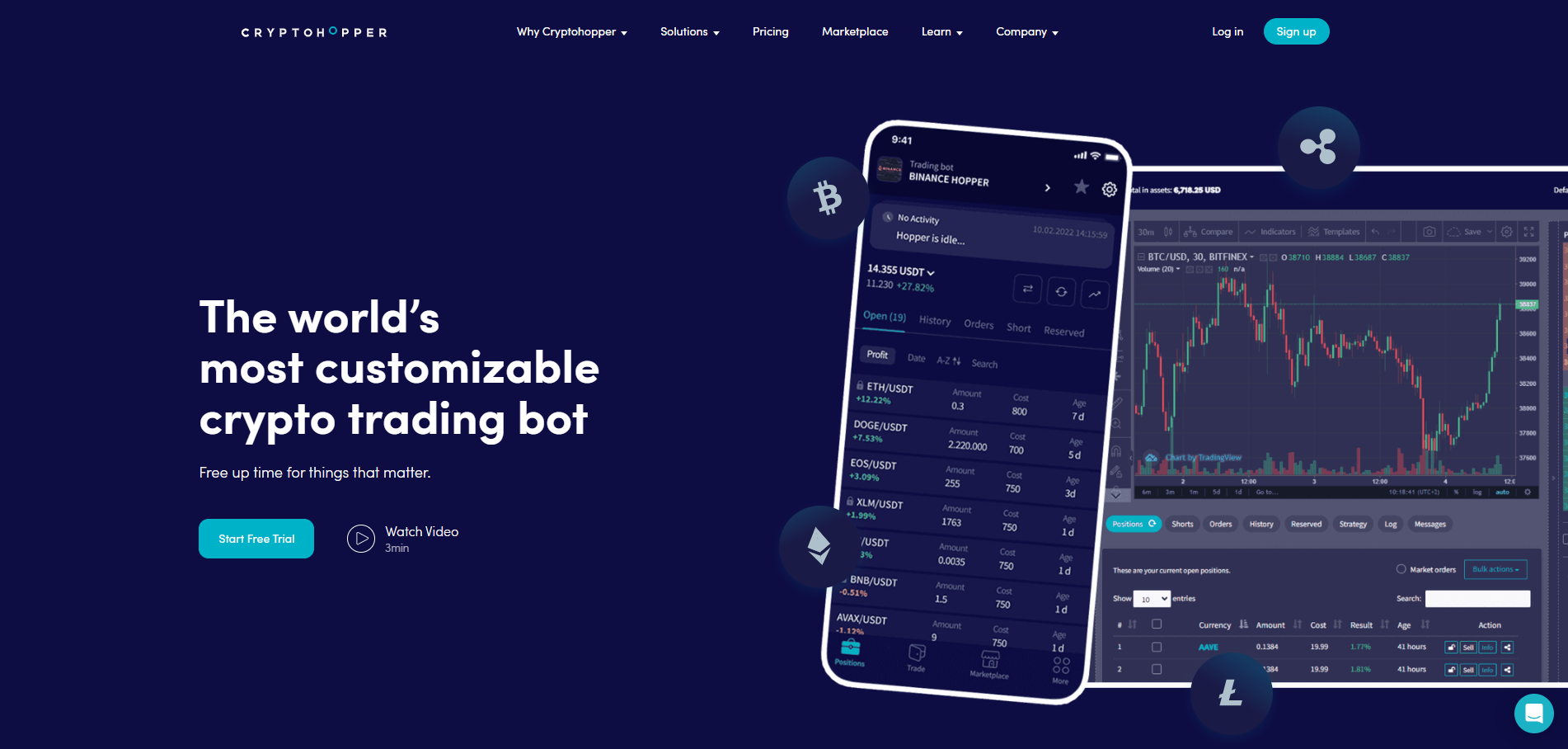
3. Pionex
Pionex is a crypto exchange with built-in trading bots, making it easy for users to automate strategies without connecting to external platforms. It offers a wide range of free, pre-set bots like Grid Trading and DCA, which are ideal for passive income seekers and active traders.
Since Pionex is both an exchange and a bot provider, traders benefit from low trading fees and seamless execution. Specifically, Pionex is especially appealing to beginners looking for a simple, all-in-one solution to start automated crypto trading.
- Popularity: Known for its low trading fees and user-friendly interface.
- Pricing: Incurs trading fees, which depend on different factors.
- Strengths: A cost-effective, all-in-one solution.

4. AlgosOne
Moving on with our list, we have AlgosOne, an AI-powered trading platform designed to simplify and enhance trading for financial markets, including cryptocurrencies, stocks, forex, and commodities. This platform utilizes advanced machine learning algorithms and natural language processing models like GPT-4, AlgosOne analyzes large datasets to predict market trends and execute trades with high precision.
- Popularity: Gaining traction among traders seeking performance-based pricing models.
- Pricing: A commission of up to 25% on every profitable trade.
- Strengths: Risk-based pricing model with performance guarantees.
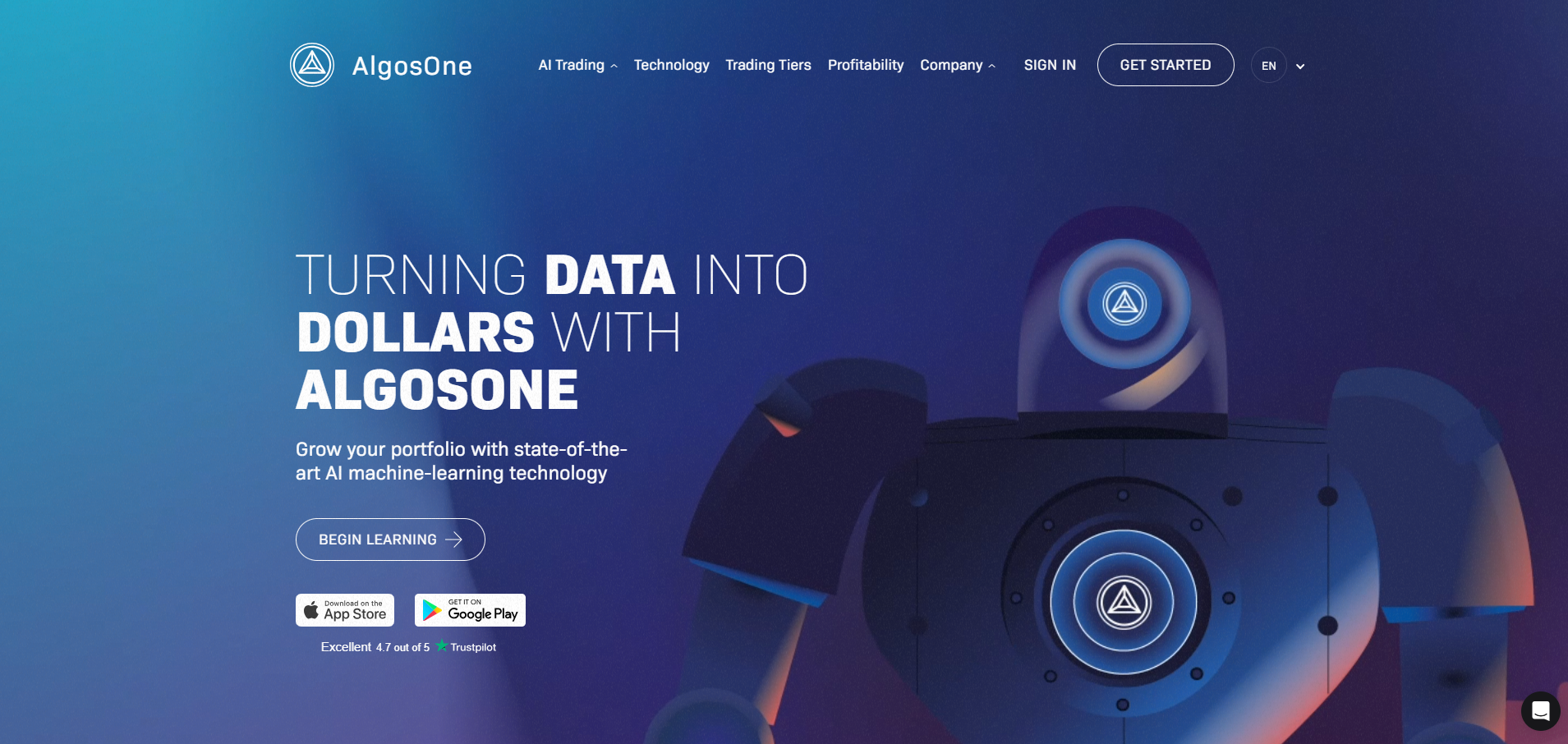
5. Kryll.io
Kryll.io is a user-friendly crypto trading platform that makes it easy for users to create, test, and deploy automated trading strategies without any technical knowledge or coding know-how. The platform’s intuitive drag-and-drop strategy editor is great for constructing complex trading algorithms using visual blocks.
Additionally, Kryll.io also offers a marketplace where users can rent or share trading strategies, and it supports integration with external signals via webhooks, further enhancing the customization and automation capabilities.
- Popularity: Over 150,000 traders used Kryll in 2024, with 68% reporting reduced emotional trading errors.
- Pricing: Free use available, with monthly paid plans starting at starting from $2/month per bot.
- Strengths: A customizable platform with a focus on strategy development.
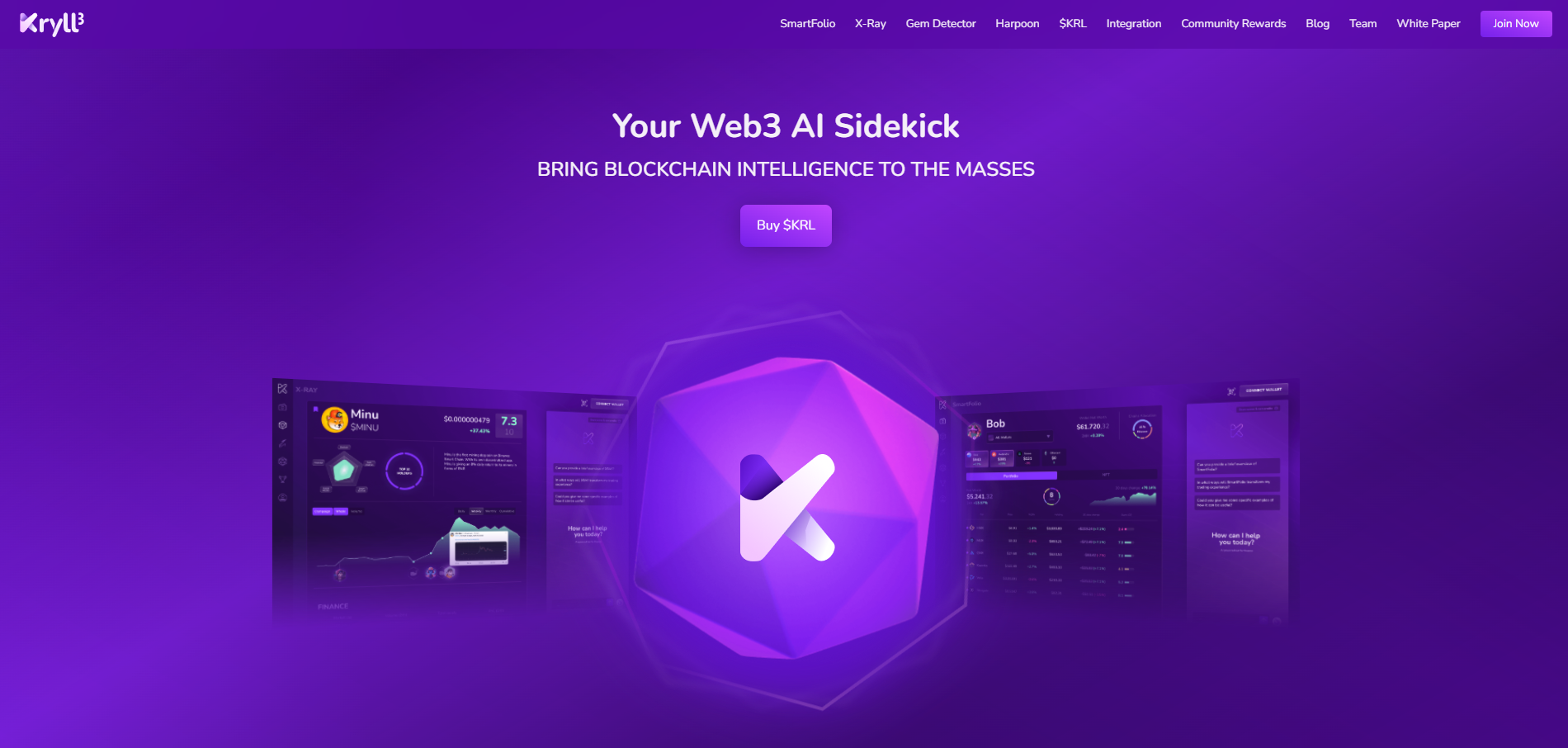
How to Use an AI Trading Bot?
- Step 1: Choose a reputable platform or software that offers AI trading bots with good reviews and security features.
- Step 2: Create an account and connect it to your preferred exchange using API keys. Note that you may have to grant certain permissions.
- Step 3: Choose or customize a strategy like grid trading, DCA (dollar-cost averaging), or trend following.
- Step 4: Set key parameters like trade size, risk tolerance, take-profit, and stop-loss levels.
- Step 5: Run historical simulations to test your strategy and to see how the bot would have performed under past market conditions.
- Step 6: Launch the bot in live or demo mode & keep an eye on its performance regularly and make adjustments as needed.
Common Risks and How to Avoid Them
AI trading bots offer truly amazing advantages like automation, 24/7 trading, and the ability to analyze large datasets at a fraction of the time it would take to do it manually. However, if you want to use an AI bot for trading, there are some significant risks that everyone engaging with trading bots should be aware of.
Security Risks & Scams
AI might be booming, but so are the opportunities for scammers to take advantage of it. Fraudulent platforms often promise unrealistically high returns with little to no effort to attract people and their money.
The best thing to remember here is to use critical thinking, read reviews, check compliance adherence, and do extensive research if you want to use lesser-known AI-powered trading bots. That and there’s really no such thing as free AI bots.
Volatility
It’s no secret that AI trading bots use historical data to run their algorithmic trading systems and make decisions. But when it comes to cryptocurrencies, the digital asset market is literally defined by volatility, and sudden fluctuations, such as “black swan” events, can lead to challenges if a bot’s algorithm is not trained to handle these conditions.
To avoid events like this, it’s best to set up stop-loss orders to limit potential losses during sharp market declines. As a secondary action, especially if you’re more trading-savvy, you could regularly backtest and update your trading strategies based on market trends.
Over-Reliance on Automation
The advent of artificial intelligence capabilities has brought with it certain risks, like over-reliance. While ChatGPT has become a normal daily tool for nearly every single one of us, it’s important not to forget human critical thinking, which can especially be overlooked in relying on AI trading bots.
This could result in missed opportunities or, worse, unwanted losses if the bot fails to respond to unusual market conditions. A good rule of thumb here is to regularly review and adjust bot performance to ensure it aligns with your goals and maintain a basic understanding of market trends and bot operations so you can intervene when needed.
Summing Up
Artificial intelligence is an amazing new technology that’s actively improving our everyday life on a growing scale, and AI trading bots are a great example of this. However, as with any technology, especially one connected to financial markets and personal funds, careful planning, consideration, and proper research are necessary to get a better understanding of how AI trading bots work.
Hopefully, this guide helped shed some more light on the AI trading bot subject, but remember, nothing connected to your finances should be taken lightly, so make sure to act according to your personal needs.
FAQ
How does an AI trading bot work?
AI trading bots use algorithms and machine learning to analyze vast amounts of market data, detect patterns, and make automated trading decisions. They can analyze historical data and market trends, run trades based on pre-programmed rules, and adjust trading strategies based on developments in the markets.
How do I choose a trading bot?
The ultimate answer here is that the best AI investing bot will be the one that will be able to provide the features that are important to you. To help single this out, typically, the best factors to look for include:
-
- choosing a bot that supports the markets you’re trading in;
-
- making sure the bot has sufficient customization options;
-
- checking if the bot has risk management under control;
-
- confirming whether or not the bot you’re interested in has regulatory compliance covered.
Is AI trading legal?
AI trading is legal in most regions, but regulations vary by country and asset class. That and crypto trading are undergoing an intense regulatory update process globally. In the US, AI trading is mostly allowed, but it must comply with the Securities and Exchange Commission (SEC) rules.
What is copy trading?
Copy trading is an automated strategy where a bot replicates the trades of some expert trader in real time. This allows users to learn from the trader’s experience without actively managing their own trades.
Disclaimer: Don’t invest unless you’re prepared to lose all the money you invest. This is a high‑risk investment and you should not expect to be protected if something goes wrong. Take 2 mins to learn more at: https://go.payb.is/FCA-Info
